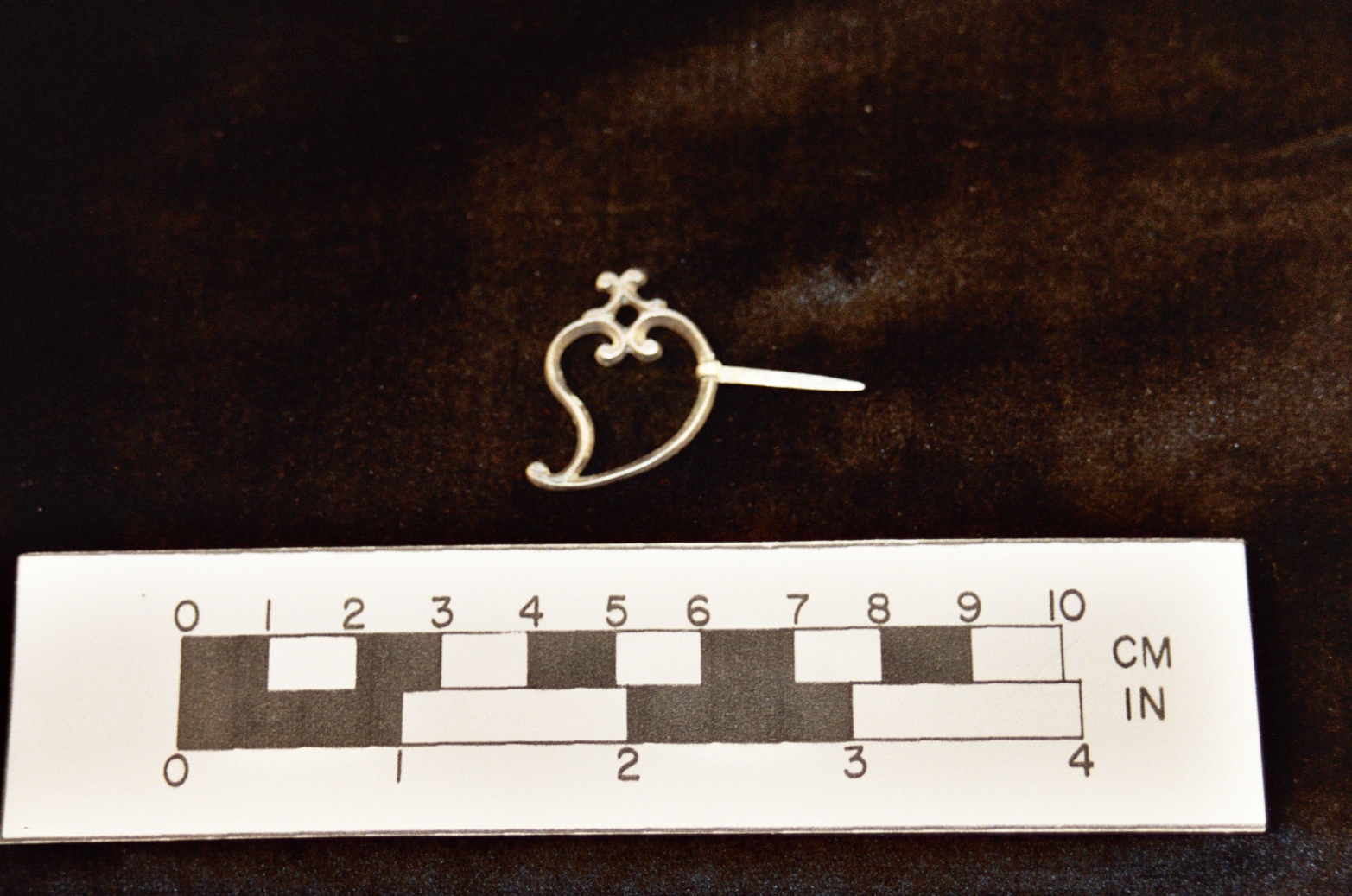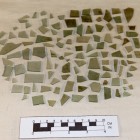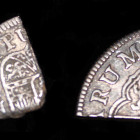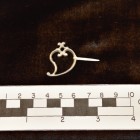Camp Security is a Revolutionary War period prisoner-of-war camp occupied by British, Scottish and Canadian prisoners and camp followers (often wives and other family members) between 1781 and the end of the war in 1783. The site is located about four miles east of the City of York, in a relatively small, undeveloped portion of suburban Springettsbury Township. Thirty years ago, PHMC archaeologists Barry Kent and Charles Hunter, with a small field crew, located over 100 archaeological features containing artifacts dating to the latter part of the 18th century. In all likelihood, these materials are related to the prisoner-of-war camp. Most of the features are pits which were dug into the ground and which ultimately became receptacles for a variety of domestic debris associated with the occupation of the camp.
The most numerous objects recovered from the pit features are discarded animal bones representing food refuse. A preliminary analysis of this faunal material indicates that beef and lamb were important components of the diet at Camp Security, with smaller amounts of pork and domestic fowl also represented. Wild food sources included small amounts of turtle. It appears the livestock was slaughtered and butchered on site, and the meat was probably eaten as large roasts and stews. These faunal remains suggest the inmates at Camp Security were reasonably well provisioned with food. This is in stark contrast to the experience of thousands of American prisoners who were captured when the Continental Army evacuated New York City in 1776. Many of the Americans were incarcerated in the notorious British prison ships anchored near the Brooklyn shore, where they were deliberately starved by their captors.
Other artifacts from the 1979 dig include thousands of fragments of window glass believed to be from the numerous log huts which were built as housing, according to contemporary written accounts.
Pieces of clay “daub,” the material used for the chinking to seal gaps between the logs of the huts, were also recovered. The 1979 investigation also recovered hundreds of copper straight pins and crude buttons fashioned from animal bone. This corroborates the written accounts of the practice of “cottage industries,” such as the manufacture of lace and buttons, by the occupants of Camp Security. Currency, such as silver “pieces of eight” (Spanish coins known as “reales,” which were sometimes sliced into eight pieces so as to make “change”) was also found. This appears to corroborate written accounts that certain prisoners were allowed to work for local farmers and earn wages. Noticeably absent from the Camp Security collection are items such as fragments of tobacco smoking pipes and liquor or wine bottles. Such
artifacts are often abundant on domestic sites dating to the 18th century.
However, dozens of other personal items such as buttons, buckles, cuff links and clothing clasps are represented in the Camp Security collection. One unique item is a silver brooch in the shape of a heart.
This is a distinctly Scottish piece of jewelry, and members of at least one Scottish regiment of Highlanders are known to have been present at Camp Security. This brooch signifies a weeping heart and was given as a farewell token and hopefully, brought protection to a loved one who had been sent to the war in America.
By the late 1990s, a local real estate developer acquired the site of Camp Security with the intention of converting the site into a residential community. Shortly thereafter, a determined group of local citizens concerned about the potential destruction of the site formed an organization known as the Friends of Camp Security. For several years, this organization has advocated for the preservation of Camp Security, with the ultimate goal of acquiring the property. Preservation Pennsylvania listed Camp Security on its Pennsylvania At Risk in 2000. In 2005, the National Trust for Historic Preservation listed Camp Security as one of America’s 11 Most Endangered Historic Places.
More recently, the Conservation Fund, a national non-profit organization devoted to land conservation, partnered with the Friends of Camp Security, Springettsbury Township and the Pennsylvania Department of Conservation and Natural Resources to acquire the 47 acre tract which had been proposed for a housing development. At a cost of over one million dollars, a fundraising campaign remains underway to help offset the expenditure incurred by the Conservation Fund, which ultimately intends to transfer ownership of the property to Springettsbury Township. We encourage all who cherish and respect our Revolutionary War heritage to contact the Friends of Camp Security at http://www.campsecurity.com for more information on how to assist with their preservation initiatives.
Thanks to Brenda Weller for her analyses of the faunal material from Camp Security, and thanks to Janet Johnson and Liz Wagner for providing access to the artifact collections from Camp Security.
Comment Policy
PHMC welcomes and encourages topic-related comments on this blog. PHMC reserves the right to remove comments that in PHMC’s discretion do not follow participation guidelines.
Commenters and Comments shall be related to the blog post topic and respectful of others who use this site.
Commenters and Comments shall not: use language that is offensive, inflammatory or provocative (this includes, but is not limited to, using profanity, obscene, or vulgar comments); disparage other commenters or people; condone illegal activity; identify the location of known or suspected archeological sites; post personal information in comments such as addresses, phone numbers, e-mail addresses or other contact details, which may relate to you or other individuals; impersonate or falsely claim to represent a person or an organization; make any commercial endorsement or promotion of any product, service or publication.
If you would like to comment on other topics not related to this blog post but related to PHMC, please fill out the PHMC Contact Us Form.





Bravo, As a resident of Springettsbury Township, I will support this effort as best I can.
Thank you for preserving our history.